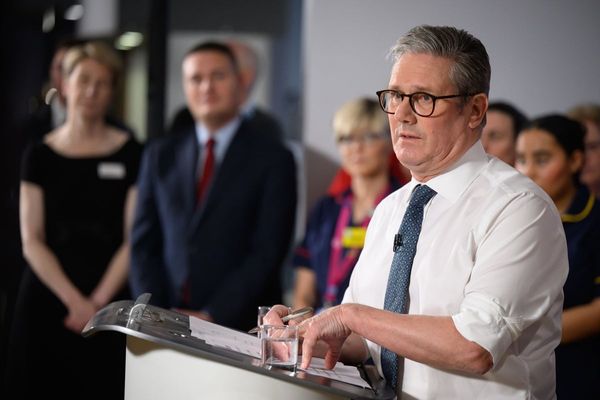
Only a year ago, Ranaut had starred in the critically and commercially successful Queen, the coming-of-age tale of a young woman jilted by her lover on the day of their wedding. Tanu Weds Manu Returns was more proof that women actors, when backed by a good script and a competent director, could reel in the audience.
You might also like
Why India wants desi navigation tech on phones
Why the RBI's GDP estimate went wrong 11 times in 15 quarters
Companies crack the whip on poor performers
How a strong dollar stole gold’s glitter
Cut to May 2022. Ranaut’s spy thriller Dhaakad, made on a budget of ₹93 crore, could earn a mere ₹2.3 crore in domestic cinemas. On day eight of its release, media reports claimed the film had sold as little as 20 tickets across the country, just before being taken off screens. This isn’t Ranaut’s cross to bear alone. Other films driven by female actors like Taapsee Pannu’s Shabaash Mithu ( ₹2.09 crore) and Dobaaraa ( ₹3.63 crore) also saw dismal box-office collections. That’s not all. Many movies with women in the lead didn’t even attempt a theatrical release but were streamed directly on OTT platforms —Darlings, Good Luck Jerry, Sherni, Jalsa, Looop Lapeta.
In the larger story of Hindi cinema’s struggle to win back audiences, a sub-plot is playing out. The slice-of-life cinema headlined by female actors is being edged out of the theatrical space. On the big screen, boys appear to be having all the fun, with action films like KGF: Chapter 2, RRR and Pushpa: The Rise- Part One making brawny spectacle the most successful formula.
Alia Bhatt’s Gangubai Kathiawadi stands out as an exception in this testosterone-fuelled moviescape. But, as many point out, the film rode high on the goodwill that director Sanjay Leela Bhansali enjoys among audiences, with his larger-than-life aesthetic rooted in Indian sensibilities, grand song-and-dance and enjoyable melodrama. Moreover, even Gangubai, a rare successful Hindi venture at the box office post the pandemic, made at a budget of ₹181 crore, only managed ₹126 crore in earnings, with recovery bolstered by satellite, digital and other rights sales.
The pandemic has forced all filmmakers back to the drawing board. Still, a bunch of producers have shown confidence in larger-than-life action films starring male leads, backing films such as Sooryavanshi (Akshay Kumar) and RRR (Ram Charan, Jr. NTR). Not all of these bets have worked. But producers of female-led films were among the first to give in, preferring to hedge risks for their overall company balance sheets by choosing to sign lucrative OTT deals rather than pushing for a theatrical release.
Vidya Balan’s Shakuntala Devi was one of the first films to stream digitally in 2020, followed by Janhvi Kapoor-starrer Gunjan Saxena-The Kargil Girl, Bhumi Pednekar’s Durgamati, Ekta Kapoor’s production Dolly Kitty Aur Woh Chamakte Sitare, Kriti Sanon’s Mimi and Balan’s own Sherni, among others. There is much to the argument that OTT platforms have thrown up enough and more opportunities and plum roles for women actors of all ages, as shows like Aarya (Sushmita Sen), Panchayat (Neena Gupta), Masaba Masaba (Masaba Gupta) and The Fame Game (Madhuri Dixit) illustrate.
But given the limited budgets of female-led films, the scanty marketing resources that go into promoting such movies (in comparison to action and period films headlined by male actors), it appears that women actors are being pushed into a tiny, “ladies-only" corner. With an audience that seems to want to come to theatres only to watch larger-than-life spectacles, is the big screen turning into a space solely owned by the big boys?
Women’s era
Like most film industries, Bollywood is a man’s world. Ageism and stereotypes slam more doors on women actors than is opened by good writing and inspiring directors. Nevertheless, from Madhubala to Madhuri Dixit, Meena Kumari to Deepika Padukone, women actors have found fandom and fame through the ages —and, sometimes, writers and directors willing to craft movies around them. Before the pandemic, a certain kind of female-led cinema was beginning to find acceptance at the box office.
Vidya Balan’s Kahaani (2012) and Tumhari Sulu (2017), along with Ranaut’s Queen and Tanu Weds Manu Returns and Alia Bhatt’s Raazi (2018) showed that women-led scripts made sound economic sense at the big screen. “That kind of female-led cinema had just begun to bloom. But at a time when mid-sized films are, in general, not finding enough draw in cinemas, it’s like the genre has gone back into its shell," film producer, trade and exhibition expert Girish Johar said.
Perhaps, the issue is not only about male or female leads but of acknowledging the elephant in the room—that a lot of films greenlit before covid and conceived as theatrical projects are no longer seen as worthy of the 70mm experience, said independent exhibitor Vishek Chauhan. “The slice-of-life genre has been taken over by OTT. It doesn’t require a theatrical outing and Bollywood needs to amp up the mass quotient big time to bring people back," Chauhan says.
But, in recent years, most movies driven by female stars have not been mass entertainers, even if some of them ticked the boxes of progressive and meaningful cinema. That’s also true for films with male stars such as Ayushmann Khurrana, Rajkummar Rao, Shahid Kapoor and John Abraham, whose films Chandigarh Kare Aashiqui, Anek, HIT: The First Case, Jersey and Attack, haven’t found favour with audiences post covid.
Trade experts say the challenge for all actors is to make the kind of fun, commercial entertainers that can draw viewers in huge numbers irrespective of gender. “There have been plenty of fun, female character driven films in the past," Chauhan said, pointing to comedies and mass-market entertainers starring the likes of Hema Malini and Sridevi in the 1970s and ’80s. Much of Julia Roberts’ work in the 1990s and early 2000s, such as Pretty Woman and Erin Brockovich, falls in the same category and Hollywood has still managed to put women at the forefront in commercial entertainers more recently, in Captain Marvel (2019) and Wonder Woman 1984 (2020). Back home in India, Ranaut’s Queen and Tanu Weds Manu Returns are more recent examples, as is one of Sridevi’s last films English Vinglish, which had made nearly ₹40 crore at the box office when it released in 2012.
The underwhelming numbers for women-led films at the moment are part of the broader unfortunate cycle that Bollywood is caught in, according to some industry experts. “Hindi films have stopped speaking to audiences and feeling entertaining, the plots are jaded and even the masala needs to be refreshed," says film critic Shubhra Gupta. For instance, Shabaash Mithu, a sports drama based on the life of cricketer Mithali Raj didn’t work, not because it was headlined by a woman, but because it didn’t fit into any expectations, much like ’83, another sports film, based on the 1983 World Cup, Gupta says.
But that’s where the gender bias creeps in. “For women, a couple of box-office failures create impediments for future projects. However, no such introspection happens in films with male protagonists and the risk appetite remains large for a much longer time despite back-to-back losses," said Kanupriya A Iyer, head, business affairs and senior producer, Locomotive Global Media, a production house. Even when they deliver successive box-office hits, top female Hindi film stars have never commanded fees close to top male stars. Deepika Padukone or Alia Bhatt, for instance, are only known to make ₹20-25 crore per film as compared to the ₹80-100 crore or even more that an Akshay Kumar would.
Gone girls
Several producers attribute the limited box-office potential of female-driven films to the resources allocated to market them in the first place. “It’s not just about the person headlining the project but the resources that go into promoting it across the country and releasing it on a particular scale that then result in wider audiences gathering for them," said Malayalam film writer and director Anjali Menon, known for movies like Ustad Hotel, Bangalore Days and Koode. The theatrical audience is increasingly tough to break into, Menon said, and it doesn’t help that these films are neither marketed on a mass scale nor released widely.
With most families choosing to stay home post covid and the theatre-going audience base turning predominantly male, the risk with hypermasculine, male-led narratives is lower. And so, producers are investing in films that appeal to male audiences and are driven by male characters that these viewers can in turn worship and look up to. The pan-India success of multilingual action flicks like KGF: Chapter 2, RRR and Pushpa: The Rise- Part One, that have reaped box office rewards across Hindi, Tamil, Telugu and Malayalam versions, is vindication for such a strategy.
But even if such films have cracked the box-office code, they also pander to alarmingly regressive attitudes towards women. Female characters in all these films are either decorative props, or are cast in borderline demeaning roles. In Pushpa, for instance, a woman agrees to kiss a man in return for cash. In KGF, the female lead is termed ‘entertainment’ by the male protagonist. In an article for Firstpost, film writer Anna MM Vetticad said the pan-India success of a film like Pushpa would be a welcome threat to Bollywood’s hegemony and a sign of the blurring of boundaries between India’s multiple film industries and audiences. “But considering the similarity of Pushpa’s content with male-centric commercial cinema across Indian languages, the film’s pan-India appeal also indicates a disturbing truth: that a country divided by sectarian considerations, languages and deep cultural chasms is united in its embrace of patriarchy and misogyny in mass entertainment," she wrote.
In search of a good time
These are difficult times for the Hindi cinema. But film industry experts are hopeful that all genres will find their place in due course, once the industry recovers its mojo. There is no reason for a well-made film with drama, conflict, resolution and pay-offs not doing well, with either a male or female character at the centre. Like with the advent of home video in the 1980s, there is need for filmmakers, in general, to see new technology as reason to go back to the drawing board.
“We must acknowledge behavioural changes in the consumer due to other socio-economic, political, and technological forces at play post-pandemic that may affect the film business," Iyer said.
The next few months, as production resumes greater normalcy and ticket rates see some correction, could bode well for mid-budget films. Early 2023, Ranaut will star in Tejas, where she plays an Air Force pilot; she is playing Indira Gandhi in a film titled Emergency that she will direct herself and which will release next year. Deepika Padukone is slated to produce a remake of Hollywood hit The Intern where she plays the lead role, and Farhan Akhtar will direct Priyanka Chopra, Katrina Kaif and Alia Bhatt in a road movie called Jee Le Zara. As Chauhan put it, “There is enough to prove the box office is not depressed. Give the audiences a good time, and they will come."
(All box-office collection estimates are by trade website Box Office India.)
Elsewhere in Mint
In Opinion, Jaspreet Bindra writes on five things that the tech crash got right in India. Mythili Bhusnurmath wishes the monetary policy panel luck in ‘interesting times’. Kishore Poduri suggests solutions to the problem of moonlighting.







